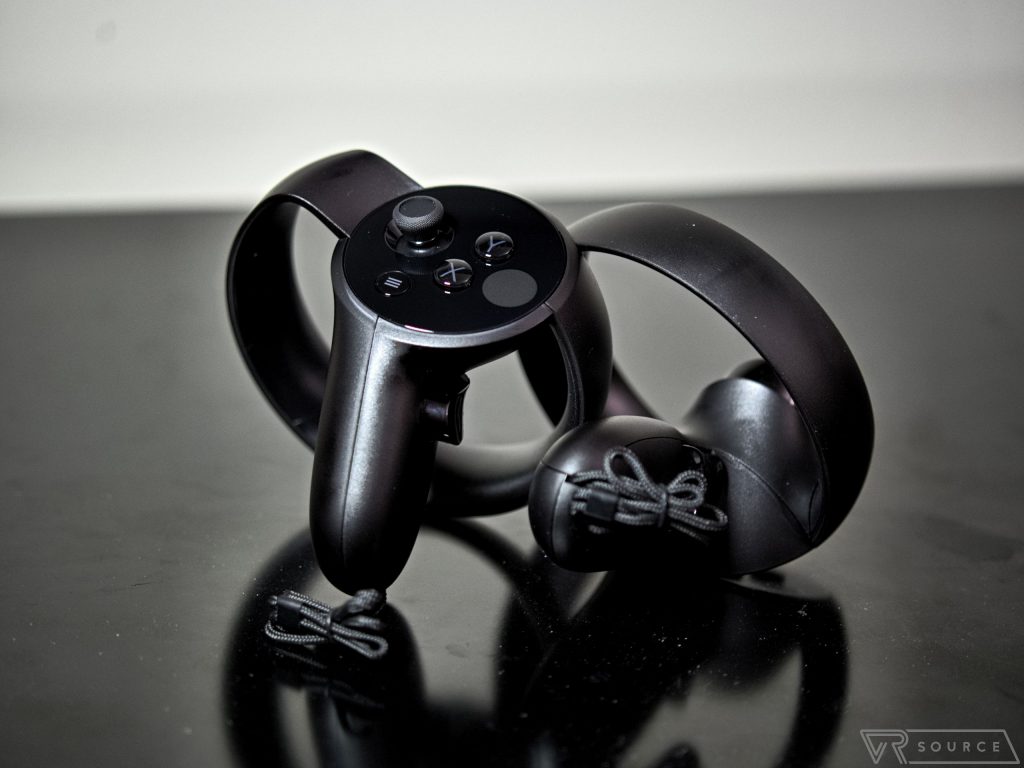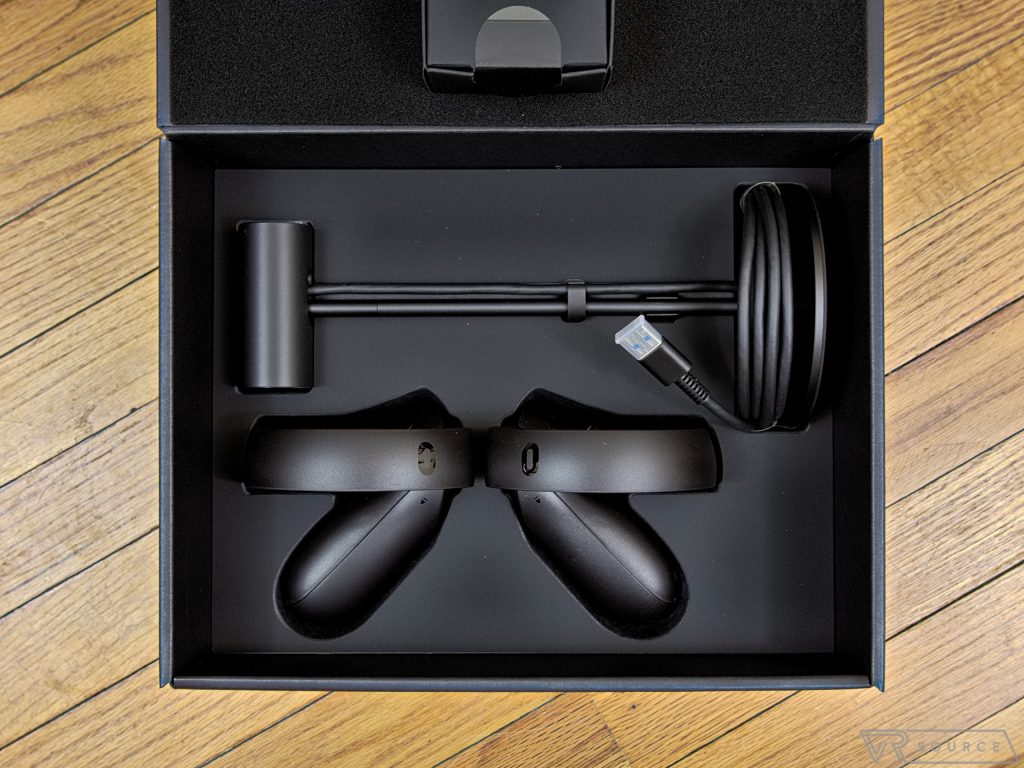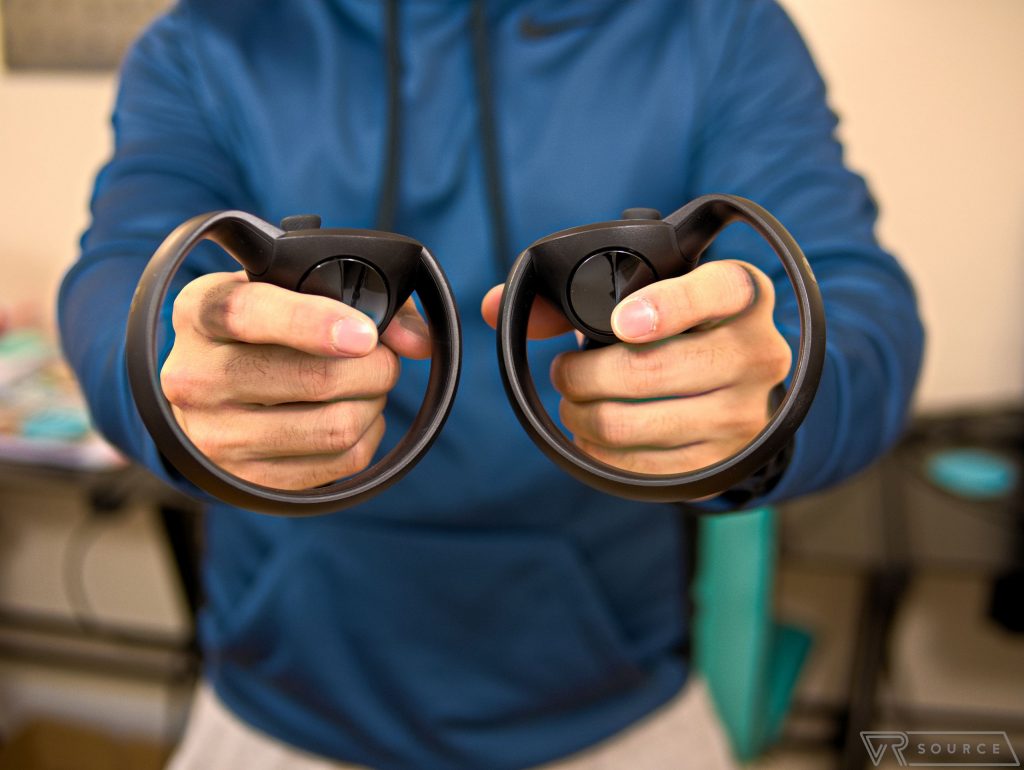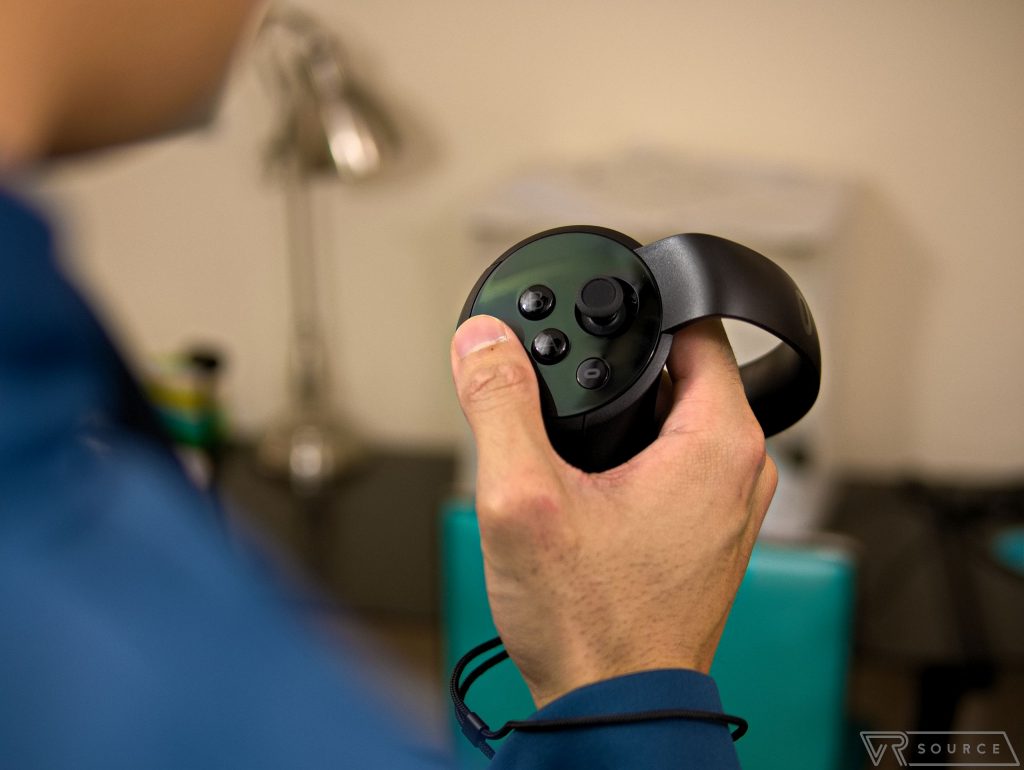Links on VR Source may earn us a commission, Learn more.
What a time it is to be alive! Seriously, we have REAL virtual reality, you know, the practical kind that allows us to transport to another world – while still having our two feet planted in our homes. One of the standout systems released this year, the Oculus Rift, has seen its fair share of triumphs and opportunities, as the segment as a whole has been riveted by some compelling options. Even though the Rift was first out of the gate to help establish this unexplored territory, it has seemingly been overlooked by the HTC Vive and Sony PlayStation VR.
Sure, the support has been there from developers, but the HTC Vive’s ability to offer room scaling to allow users to walk within confined spaces, as well as how its motion controllers act as our virtual hands, has made it the more convincing implementation thus far. Oculus, on its part, has been rather open about the Rift’s shortcomings, so they’ve been working diligently to offer the next big thing to enhance the VR experience.
Enter the Oculus Touch, these oddly designed controllers that are aiming to redefine the Rift’s experience. We’ve waited long for them to arrive, but they’re finally here to potentially make the Rift the premier VR system. Do they deliver? Let’s not waste any time and dive right in!
Table of Contents
Design
Needless to say, there’s no hiding its odd-looking design, one that can arguably be described as Sony’s DualShock controller, but cut right in half – down the middle, in fact. Consisting of two controllers, both of which feature analog sticks, three buttons, and two trigger buttons. The latter two we feel are the most relevant because when you hold the controllers your index and middle fingers line up and sit on top of them.
This, of course, allows for some interesting articulation that we haven’t seen before in a VR controller, effectively emulating the motion of our hands in the virtual world. The controllers themselves are ergonomically designed, in an ingenious way as well, to make it feel as though they naturally conform to our hands in a rested manner. It’s hard to describe, mainly because they appear to be obtrusive to the eye from a cursory glance, but that’s far from the case.
Everything we need in a controller is at our disposal, which makes the Oculus Touch controllers such an invaluable tool. The only downside to the design in our opinion, however, is that they’re powered individually by a single AA battery. Now it would’ve been better to go with a rechargeable implementation, but Oculus assures us that the single battery will achieve up to 30 hours without the haptics enabled – or 20 hours with them on.
Nothing compares to the design of the Oculus Touch. They’re nearly perfect, significantly more appropriate than the competition right now in terms of how they feel and how they’re used in virtual reality. At times even, it doesn’t even feel like we’re holding onto something with our hands – and that’s how incredible the ergonomics are here with the controllers.

Setup
Included with the packaging is a tracking sensor, similar to the one that comes with the Rift, which helps to elevate the VR experience to the next level. Well, it’s actually more like to the degree of the HTC Vive, but we’ll explain that one later on. In terms of the Oculus Touch’s setup, it’s a breeze because all that’s necessary is to connect the tracking sensor to our PC, getting the controllers to connect, and thus create our playing space (Guardian System).
All told, the entire process takes no more than 15 minutes, so it’s a no-brainer thing – unlike its rivals’ setup processes. Come to think of it, that’s the beauty of Oculus’ system, just because it’s a no-frills, straightforward process. It’s easy, but if you opted to go with a 3-sensor setup, you’ll just need to place the sensors strategically (probably in a triangular formation), to ensure the most optimal tracking system.
Either way, this new tracking implementation places the Rift into the same caliber as the Vive.

VR experience
We’ll cut to the chase and say that the Oculus Touch is without question, the best controllers for virtual reality – supplanting the Vive’s motion controllers in the process. As we’ve explained already, the ergonomics are well above anything else out there. Comparatively speaking, the ergonomics separate it apart from the competition, party due it implements the gripping process in virtual reality.
Obviously, firing a weapon/gun is handled in the same manner as other controllers – you essentially pull on the analog trigger along your index finger. Picking up stuff in VR, or alternatively grabbing stuff, is a bit more complex in VR. However, with the Oculus Touch, it delivers the most natural implementation. Whereas the Vive and PS Motion controllers offer a clumsier process, like having to activate the grip buttons along the sides of the Vive controller, the Oculus Touch leverages the extra analog trigger (known as the grip buttons) resting under the middle finger to simulate the motion.
The end result is nothing we’ve experienced before, making it feel like we’re now using our own hands in the VR space. Previous to this, we’re already gripping controllers, much like those from the Vive and PS VR, so the act of “gripping” feels unnatural.

Besides the natural feel of the controllers, the tracking system is spot on in terms of being responsive. Thanks to the additional tracking sensor, there’s now wider coverage in giving the Oculus Touch controllers a higher level of interaction that wasn’t possible before with the Rift. Considering that the two sensors work in conjunction with one another to offer a wider tracking space, it means that the two controllers (and headset) are all tracked precisely. The updated tracking system, aided by the additional sensor, now enables the system to specify the playing space, known as the Guardian System here.
It’s very similar to the HTC Vive’s room scaling mode, which allows users, the ability to move/walk/interact within a predefined space – something that undeniably adds to the VR experience. Due to how the two sensors are positioned in front of us, the tracking can be obstructed by our body, when we face the opposite direction. While most Touch-compatible games have us facing forward, towards the sensors, it’s not too often that the tracking is compromised. Still, there’s still a possibility that it can happen.
Of course, this minor issue can be eliminated by the introduction of a third sensor, where the recommended placement is behind us, the Rift can then be transformed to achieve uninterrupted full 360-degree tracking. Don’t get us wrong, the two sensor implementation is still pretty good, but that three sensor one would eliminate any tracking obstructions.
Regardless, the Oculus Touch not only places the Rift into the same playing field as its rivals, but smashes the interaction to the degree we haven’t seen before. Previous to it, most of the Rift’s interaction were mainly handled by the headset, which can go only so far, but the introduction of the Touch enhances it – even more than what the Vive delivers. These are literally our hands in the VR world, there’s nothing close that can compare.

Conclusion
Most people would balk at the stiff $200 price tag of the Oculus Touch, which includes the two controllers, the tracking sensor, and batteries. Whereas most console-grade controllers retail for $50 or less, it’s almost impossible to wrap our heads about having to dish out the costly price for the Oculus Touch, but these aren’t your ordinary video game controllers. Rather, they enhance the VR experience with the Rift to a whole new level – one that pushes ahead of the competition.
When they’re the best at simulating our interactions with our hands in the VR space, there’s very little for us to complain about in terms of price. Seriously, they’re worth every penny! The Rift clearly had its shortcoming when it launched earlier this year, but now it’s a totally different story at the year’s end. From its tracking, ergonomics, and its ability to mimic certain hand functions, the Oculus Touch is unlike any VR controller out there. It’s a must buy!
